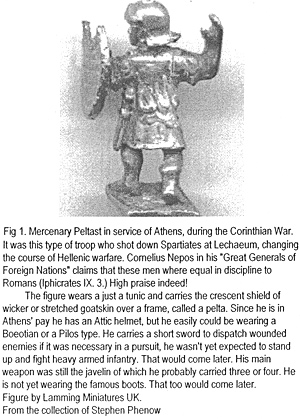 All dates in this paper are BC. Classical Greece is defined as the time between Xerxes' invasion of Greece and that of Philip II of Macedon. I have made no attempt at consistency with my choice of Latinization of Greek names and words; technical Greek terms appear in italics, and I have provided a translation the first time each appears. Similarly, sources appear in full the first time they are mentioned, and are abbreviated thereafter. Translations from the Greek are my own, based on those listed in the bibliography.
All dates in this paper are BC. Classical Greece is defined as the time between Xerxes' invasion of Greece and that of Philip II of Macedon. I have made no attempt at consistency with my choice of Latinization of Greek names and words; technical Greek terms appear in italics, and I have provided a translation the first time each appears. Similarly, sources appear in full the first time they are mentioned, and are abbreviated thereafter. Translations from the Greek are my own, based on those listed in the bibliography.
Fig 1. Mercenary Peltast in service of Athens, during the Corinthian War. It was this type of troop who shot down Spartiates at Lechaeum, changing the course of Hellenic warfare. Cornelius Nepos in his "Great Generals of Foreign Nations" claims that these men where equal in discipline to Romans (Iphicrates IX. 3.) High praise indeed! The figure wears a just a tunic and carries the crescent shield of wicker or stretched goatskin over a frame, called a pelta. Since he is in Athens' pay he has an Attic helmet, but he easily could be wearing a Boeotian or a Pilos type. He carries a short sword to dispatch wounded enemies if it was necessary in a pursuit, he wasn't yet expected to stand up and fight heavy armed infantry. That would come later. His main weapon was still the javelin of which he probably carried three or four. He is not yet wearing the famous boots. That too would come later. Figure by Lamming Miniatures UK. From the collection of Stephen Phenow
My main primary sources are Xenophon and Thucydides. Forensic speeches from the fifth and fourth centuries, and later ancient sources, namely Diodorus Siculus and Plutarch, have also been consulted. I have also used John Boardman's excellent series of books dealing with Greek art, published by Thames and Hudson. Useful secondary sources on peltasts are: L'autre Guerrier, by F. Lissarrague, Greek Mercenary Soldiers, by Parke and Part Two of Kenneth Pritchett's magnificent The Greek State at War. Arms and Armour of the Greeks, by A. Snodgrass, still provides the best volume on Greek weapons and armour.
I have made somewhat liberal use of footnotes due to the complexity of some of the arguments made -- those not wishing to delve so deep may freely ignore them.
Introduction
Generally speaking, in equipment and function the peltastes (peltast) occupied a position between the heavilyarmed infantryman, or hoplites (hoplite), and the light skirmisher, orpsuos (psiloi), sometimes referred to as gumnetia (gymnes). Peltasts generally fought in a loose formation, though usually not as dispersed as that of the psiloi. They used skirmishing tactics against hoplites - that is, engaging them with missiles, usually javelins, and then retiring when the hoplites closed on them. [Troops armed with bows and slings are usually referred to either as psiloi, or toxotoi (archers) and sphendonetes (slinger), though see below for the inconsistency in our sources.]
Even when fighting enemy psiloi or other peltasts they relied on missile fire, sometimes followed by a charge. They generally performed badly against cavalry. Typically, they were armed with a light shield, usually crescent-shaped or round, javelins, and a dagger or short sword. (Fig. 1) Some, especially later in our period, may have worn light armour, such as helmets and/or light cuirasses. (Cover, Fig 2, Fig 3)
The Peltast in Classical Greece
-
Preface and Introduction
What is a Peltast?
Speed and Maneuverability
Equipment and Function
Effectiveness in Battle
Conclusion and Bibliography
Peltasts in Action Diagram (27K)
Peltasts on Attic Amphora (86K)
Peltasts on Attic Cup (73K)
Back to Strategikon Vol. 2 No. 2 Table of Contents
Back to Strategikon List of Issues
Back to MagWeb Master Magazine List
© Copyright 2002 by NMPI
This article appears in MagWeb.com (Magazine Web) on the Internet World Wide Web. Other articles from military history and related magazines are available at http://www.magweb.com